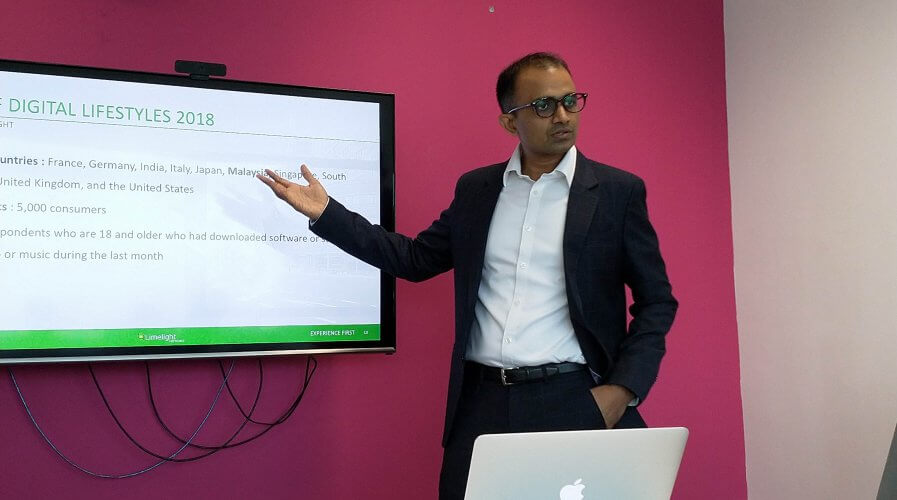
Jaheer Abbas, Senior Director of Sales for Southeast Asia and India, Limelight Networks explained that companies need to provide users with a seamless experience across devices. Source: Limelight Networks
Why content distributors should keep things simple
MORE people are streaming content online. The increase in network bandwidth at the turn of the millennium has enabled services like Spotify and Netflix to provide content to users anytime, anywhere.
According to a report by Limelight Networks, most people surveyed prefer to stream content online than download content to watch offline.
As online streaming becomes increasingly popular, customers are expecting content to be delivered quickly and smoothly across their devices.
However, in some parts of Asia, the network infrastructure isn’t always robust enough to provide the fast load times and low latency that is crucial to online streaming services.
In fact, more than half of the survey respondents blame internet service providers when facing difficulty in downloading and streaming.
While content distributors can’t control the type of network infrastructure available to their users, there are a few things they can do, to ensure a better user experience.
The report highlighted that across Asia, mobile is by far the most popular platform used for streaming content. However, different mobile devices often require different streaming media formats such as the HLS, HDS, and MPEG-DASH video formats.
It is thus important that content distributors optimize content delivery across various streaming formats. During a media briefing, Jaheer Abbas, Senior Director of Sales for Southeast Asia and India, Limelight Networks, suggested that companies must invest in a solution with device detection and on-the-fly transcoding and transmuxing, to help streamline the process of preparing content.
On top of delivering across a variety of formats, consistency is also key. Mobile connections are susceptible to changes in bandwidth and network latencies. This can lead to video rebuffering if the content is not delivered at the optimal bitrate to match the viewer’s current network conditions.
“We are no longer single device users,” Abbas explained. “A user could be streaming videos on their mobile during their commute, then switching to desktop when they have access to better network connectivity. The experience has to be seamless across devices.”
Content distributors should monitor users’ connection and optimize delivery based upon real-time analysis, to provide the highest possible picture quality without experiencing rebuffering.
Lastly, it is vital that companies deliver services in a secure manner. Users expect businesses to safeguard any data gathered about them, especially sensitive transactional information including passwords and credit card data.
“Security adds complexity to business operations, but in any form of attack, the damage is very real and immediate. Every minute your website is down is dollars lost, not to mention your brand reputation is gone,” concluded Abbas.
READ MORE
- Strategies for Democratizing GenAI
- The criticality of endpoint management in cybersecurity and operations
- Ethical AI: The renewed importance of safeguarding data and customer privacy in Generative AI applications
- How Japan balances AI-driven opportunities with cybersecurity needs
- Deploying SASE: Benchmarking your approach






